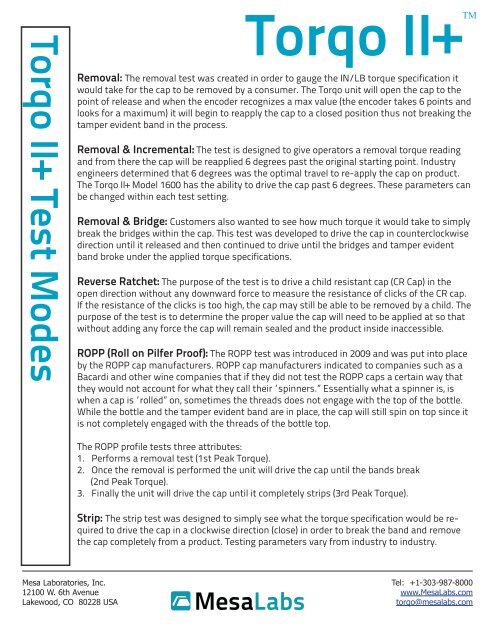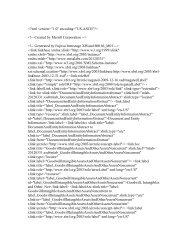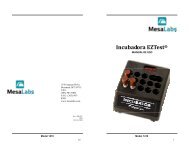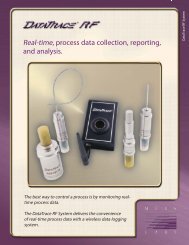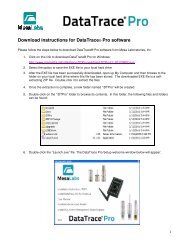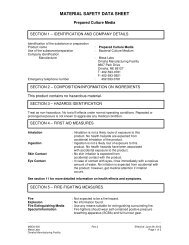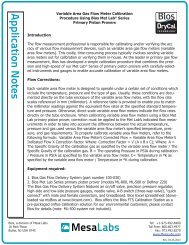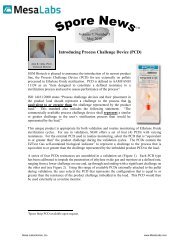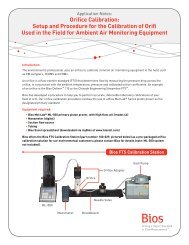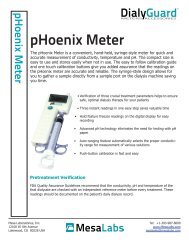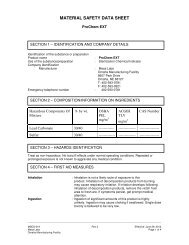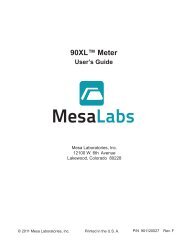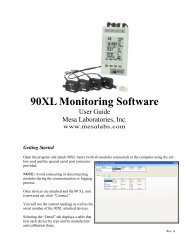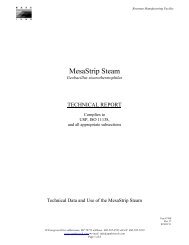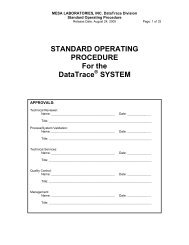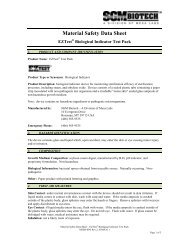Torqo II+ Test Modes - Mesa Labs
Torqo II+ Test Modes - Mesa Labs
Torqo II+ Test Modes - Mesa Labs
Create successful ePaper yourself
Turn your PDF publications into a flip-book with our unique Google optimized e-Paper software.
<strong>Torqo</strong> <strong>II+</strong> <strong>Test</strong> <strong>Modes</strong><strong>Torqo</strong> <strong>II+</strong>TMRemoval: The removal test was created in order to gauge the IN/LB torque specification itwould take for the cap to be removed by a consumer. The <strong>Torqo</strong> unit will open the cap to thepoint of release and when the encoder recognizes a max value (the encoder takes 6 points andlooks for a maximum) it will begin to reapply the cap to a closed position thus not breaking thetamper evident band in the process.Removal & Incremental: The test is designed to give operators a removal torque readingand from there the cap will be reapplied 6 degrees past the original starting point. Industryengineers determined that 6 degrees was the optimal travel to re-apply the cap on product.The <strong>Torqo</strong> <strong>II+</strong> Model 1600 has the ability to drive the cap past 6 degrees. These parameters canbe changed within each test setting.Removal & Bridge: Customers also wanted to see how much torque it would take to simplybreak the bridges within the cap. This test was developed to drive the cap in counterclockwisedirection until it released and then continued to drive until the bridges and tamper evidentband broke under the applied torque specifications.Reverse Ratchet: The purpose of the test is to drive a child resistant cap (CR Cap) in theopen direction without any downward force to measure the resistance of clicks of the CR cap.If the resistance of the clicks is too high, the cap may still be able to be removed by a child. Thepurpose of the test is to determine the proper value the cap will need to be applied at so thatwithout adding any force the cap will remain sealed and the product inside inaccessible.ROPP (Roll on Pilfer Proof): The ROPP test was introduced in 2009 and was put into placeby the ROPP cap manufacturers. ROPP cap manufacturers indicated to companies such as aBacardi and other wine companies that if they did not test the ROPP caps a certain way thatthey would not account for what they call their “spinners.” Essentially what a spinner is, iswhen a cap is “rolled” on, sometimes the threads does not engage with the top of the bottle.While the bottle and the tamper evident band are in place, the cap will still spin on top since itis not completely engaged with the threads of the bottle top.The ROPP profile tests three attributes:1. Performs a removal test (1st Peak Torque).2. Once the removal is performed the unit will drive the cap until the bands break(2nd Peak Torque).3. Finally the unit will drive the cap until it completely strips (3rd Peak Torque).Strip: The strip test was designed to simply see what the torque specification would be requiredto drive the cap in a clockwise direction (close) in order to break the band and removethe cap completely from a product. <strong>Test</strong>ing parameters vary from industry to industry.<strong>Mesa</strong> Laboratories, Inc.12100 W. 6th AvenueLakewood, CO 80228 USA<strong>Mesa</strong><strong>Labs</strong>Tel: +1-303-987-8000www.<strong>Mesa</strong><strong>Labs</strong>.comtorqo@mesalabs.com
<strong>Torqo</strong> <strong>II+</strong> <strong>Test</strong> <strong>Modes</strong>Close: The close test was developed so that the <strong>Torqo</strong> system could be used as a cappingdevice. Having the multi speed option on the unit is the best option due to the fact that thestandard 1 RPM drive of the <strong>Torqo</strong> will take a longer period of time to cap a product at thatslower speed. The multi-speed <strong>Torqo</strong> system has the ability to increase the drive speed up to15 RPM if necessary. The child resistant feature can be utilized to apply downward pressureon the cap when performing a close test on beverage or pharmaceutical products.Graph Display during <strong>Test</strong>ing• The Y axis represents Torque• The X axis represents Time or “Points”• The tests are done according to time and not according to degrees of deflection.• Advantage of the graph is that the operator can see the entire test being conducted in frontof them and will be able to make notes of any inconsistencies that may become present. Aspike in the graph can often indicate a faulty thread in the cap for example.<strong>Mesa</strong> Laboratories, Inc.12100 W. 6th AvenueLakewood, CO 80228 USA<strong>Mesa</strong><strong>Labs</strong>Tel: +1-303-987-8000www.<strong>Mesa</strong><strong>Labs</strong>.comtorqo@mesalabs.comRev. 07.24.2012


